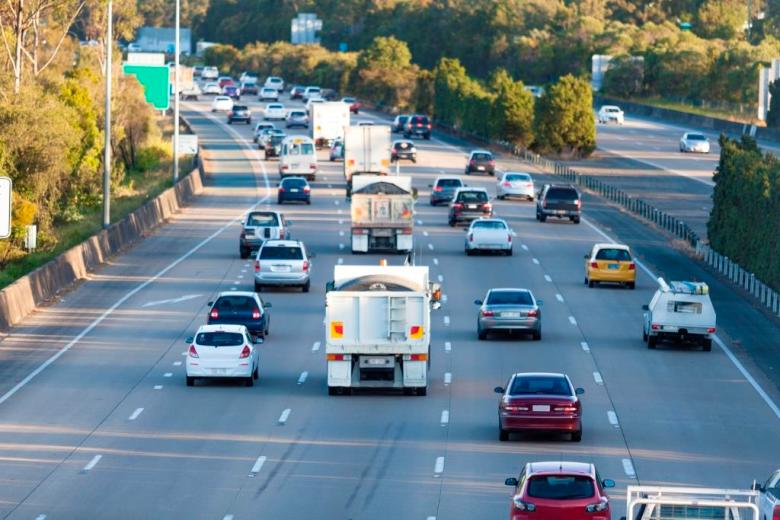
Local governments need to prepare for the infrastructure challenges associated with the advent of driverless vehicles, such as new costs and a hit to revenue, an infrastructure advisor says.
The director of automated vehicle infrastructure at Infrastructure Victoria, Dr Allison Stewart, has called on all councils to consider the potential impact of driverless vehicles.
“This really could be one of the most fundamental changes in transport over the coming years,” she told MAV’s Infrastructure and Asset Management Conference in Melbourne on Thursday.
“The most important thing for councils, first of all, is to understand research looking at how this could change the future for them.”
Dr Stewart told Government News that councils need to stay informed of the technology and consider the potential impact of driverless vehicles on their budgets – an issue she says could be a “huge concern” for many local governments.

Councils must consider the financial implications of maintaining and renewing assets like roads during the rollout of driverless and zero-emissions vehicles, said Dr Stewart.
Forecasting the potential impact of the cars on council budgets includes “trying to identify potential infrastructure costs in the short and long term as we see potentially a significant proportion of vehicle space on the roads,” she said.
“The worst thing that could happen is if you’re caught off guard with this technology at this level of change.”
A hit to revenue
Dr Stewart warned that driverless cars could result in revenue reductions for councils if patterns of transport among residents change and there is a widespread uptake of self-parking driverless vehicles.
“We might see less parking depending on whether people decide to send their private autonomous vehicles home to park during the day. That could potentially have significant impacts for revenue sources,” she said.
Dr Stewart’s remarks come as the National Transport Commissions delivers a reform roadmap to prepare Australia’s roads for more automated vehicles that could see them operating “safely and legally” on our roads before 2020.
Key concerns for councils
Infrastructure Victoria recently engaged stakeholders as part of formulating advice for the Victorian Government on the infrastructure required to support driverless vehicles.
Dr Stewart said local governments highlighted a lack of awareness around the potential impact of automated vehicles on councils as well as concern around the economic impacts on them.
Last month, Infrastructure Victoria released a consultation summary revealing stakeholders’ main concerns, which included impacts on land use patterns, energy supply and charging capacity, public acceptance and government policy and infrastructure implications.
The paper noted that although many stakeholders felt government needed to play a role in the ownership of energy infrastructure, there was significant concern around the level of responsibility for infrastructure planning for driverless vehicles.
“There is uncertainty around who is responsible for meeting the infrastructure needs of future vehicles, given responsibility for roads is shared between local and state governments,” the summary said.
It also noted stakeholder’s concern about the interaction between automated vehicles and road infrastructure, including lane sizes, line markings and lights, congestion, public transport and the need for new infrastructure.
Report forecasts scenarios
Infrastructure Victoria in April released a report that outlined a series of future scenarios resulting from the rollout of driverless vehicles on infrastructure.
Infrastructure Victoria will release a further report in August and its final advice to government in October outlining the potential infrastructure that would be required for each of the future scenarios.
Dr Stewart said this report will have “significant findings” for local and state government.
Comment below to have your say on this story.
If you have a news story or tip-off, get in touch at editorial@governmentnews.com.au.
Sign up to the Government News newsletter.

Driver-less cars are not in the minds of my customers. They are concentrating on financial survival to pay for their mortgages, school their kids, and pay for their weekly household costs. To suggest that local government needs to set up infrastructure for the driver-less car is a thought bubble. My customers would not be pleased to see council rates increase, or more public-owned infrastructure sold off, to fund a futuristic thought bubble.
My thoughts are to have the manufacturer(s) of this concept build the infrastructure and amortise the costs into their business model. My customers cannot be expected to finance the business model of a manufacturer other than by paying for it within the purchase price of the vehicle.
Good try by the manufacturers though.
This concept will make accessibility to cars even more cost effective because people wont have to own cars. They will pay an annual service fee to have access to cars picking them up and dropping off as needed. If you think councils wont need to pay for infrastructure, think again. Your customers will be demanding it!
But no explanation about where “loss of revenue” might occur. For Local Government, does this just mean less parking meter revenue?